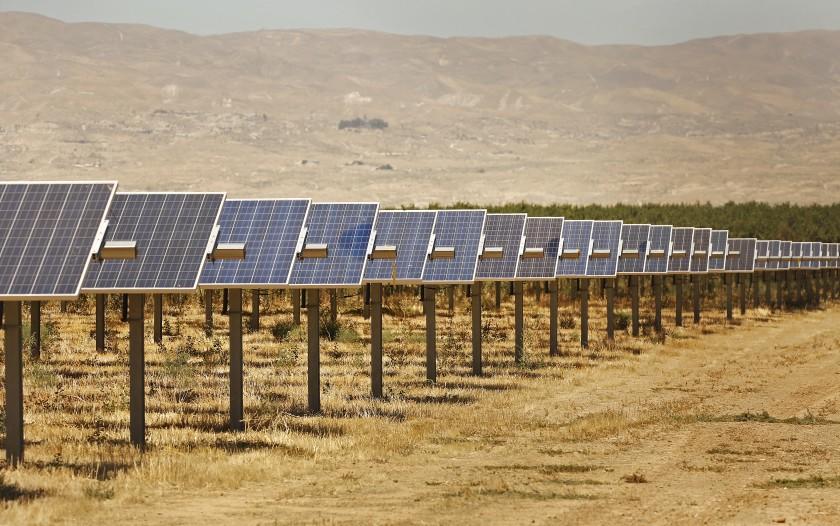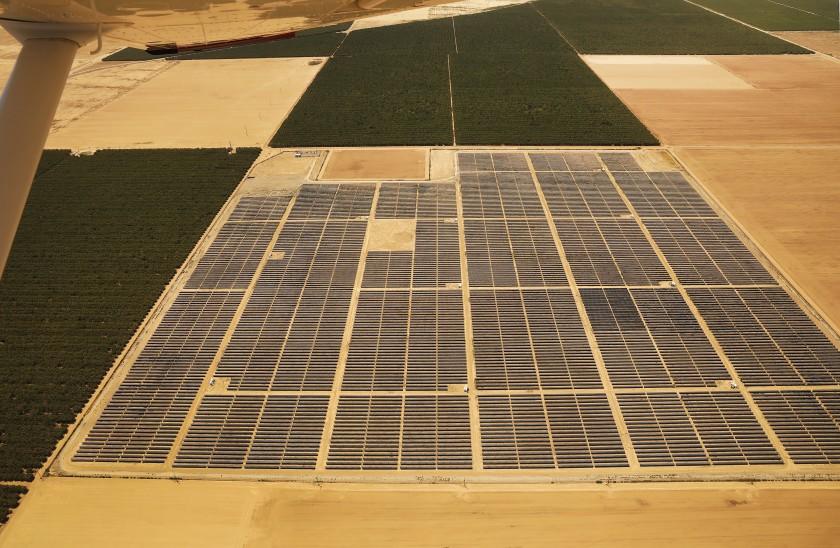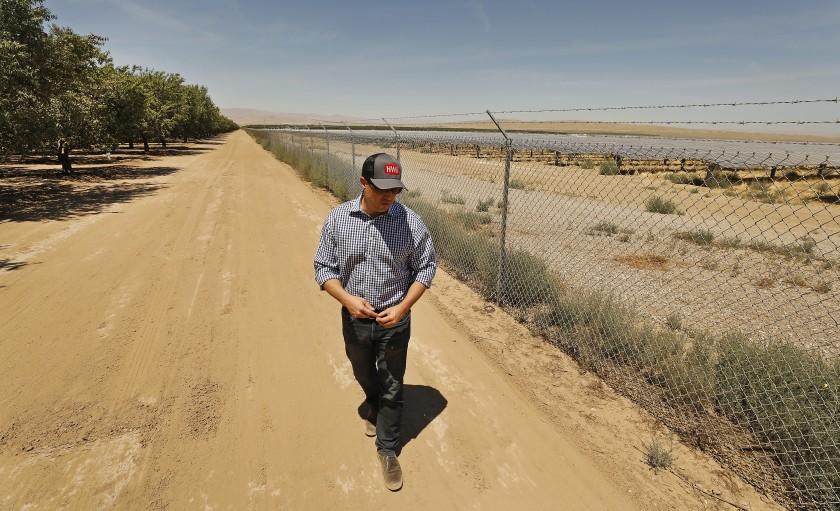California’s Central Valley is going green(er). Thanks to constrained water supplies and the Sustainable Groundwater Management Act (SGMA) which requires over 500,000 acres be taken out of production, some of the Golden State’s more than 77,000 farms are embarking on ambitious solar projects, according to the LA Times.

Converting farmland to solar farms also could be critical to meeting California’s climate change targets. That’s according to a new report from the Nature Conservancy, an environmental nonprofit.
Working with the consulting firm Energy and Environmental Economics, the conservancy tried to figure out how California could satisfy its appetite for clean energy without destroying ecologically sensitive lands across the American West. The report lays out possible answers to one of the big questions facing renewable energy: Which areas should be dedicated to solar panels and wind turbines, and which areas should be protected for the sake of wildlife, outdoor recreation, farming and grazing?
One takeaway from the report, released this week: California will need hundreds or maybe thousands of square miles of solar power production in the coming decades — and it would make sense to build one-third to one-half of that solar capacity on agricultural lands, mostly within the state. –LA Times

By utilizing land which has already been ‘ecologically degraded’ (saving the state’s desert critters from solar annihilation), California can convert a ton of land to solar panels without harming the state’s $50 billion annual agriculture industry. According to a prior study by UC Berkeley, the state has at least 470,000 acres of “least-conflict” lands in the San Juaqin Valley (the lower portion of the Central Valley) where “salty soil, poor drainage or otherwise less-than-ideal farming conditions could make solar an attractive alternative for landowners,” according to the Times.
“The next project is going to be 100 megawatts. It’s going to be five times this size,” said John Reiter, a renewable energy developer and farmer who has already gone solar on 160 acres and has big plans for the future.

(Al Seib / Los Angeles Times)
At Maricopa Orchards — a major Fresno-based grower of almonds, oranges and other crops — Reiter hatched a plan to build solar panels on thousands of acres of agricultural land in Kern County.
He worked with local officials to create a 6,000-acre habitat conservation plan, which allows solar panels on 4,000 acres of the company’s land and sets aside 2,000 additional acres for environmental mitigation. The mitigation lands are now reverting back to habitat for San Joaquin kit foxes, blunt-nosed leopard lizards, burrowing owls and other at-risk species.
Reiter’s vision is a work in progress: So far, only 160 acres have been developed with solar. The 20-megawatt Maricopa West solar project was built by the German company E.ON and sold to Dominion Energy of Virginia, on land adjacent to almond orchards. –LA Times
Reiter says he’s negotiating with three developers on seven ‘shovel-ready’ solar projects, with “permits and mitigation lands ready to go, saving them time and money,” according to the report.
Big plans
Meanwhile, other Central Valley agricultural producers are gearing up for their own projects.
Wonderful Co. — which grows tree nuts and owns Pom Wonderful, Fiji Water and Justin Wines — is aiming to power its operations with 100% renewable electricity by 2025. Wonderful opened its first solar project in 2007 and this year signed a contract with Florida-based developer NextEra Energy for a 23-megawatt solar installation, to be built on 157 acres of fallow farmland.
Wonderful sees “tremendous potential for siting solar on agricultural land,” said Steven Swartz, the company’s vice president of strategy. Wonderful, owned by Beverly Hills billionaires Stewart and Lynda Resnick, can make about as much money producing solar power over a 30-year period, Swartz said, as it can growing almonds and pistachios, two of the most lucrative crops grown in California.
“In one case we’re growing an agricultural product that has value, and in another case we’re producing electrons that have value,” he said.
Swartz added that he expects “relatively limited competition” between solar and agriculture because there’s already so much farmland that isn’t in production in the Central Valley. Wonderful has 10,000 acres it’s keeping fallow, he said, either due to poor soil conditions or insufficient water. In 2015, at the height of California’s most recent drought, Central Valley farmers kept about 1 million acres idle all year, NASA scientists estimated. –LA Times
So far the biggest Central Valley solar project is being planned by Westlands Solar Park, which is scheduled to break ground on the first 670 megawatts of a project which could eventually grow to 2,700 megawatts across 20,000 acres. It will be built on “drainage-impaired” land where the soil has been spoiled with tons of “crop-killing salts and toxic selenium” because layers of clay under the dirt prevent irrigation from reaching the underground aquifer.
“If you continue to farm these types of lands, you continue to make the drainage problems worse and worse,” said DCaniel Kim, VP of regulatory and government affairs for developer Golden State Clean Energy.
How much will it cost to go solar?
According to the Times, citing the Nature Conservancy’s “Power of Place” report, developing solar farms on in-state land which has regulatory clearance could cost around $110 billion. If the projects were to expand to lands with endangered species or, that figure could rise to $125 billion. Easing land-use rules, meanwhile, would bring the costs down to around $106 billion.
“That West-wide scenario is the best-case scenario,” said Arne Olson, a co-author of the Nature Conservancy report and senior partner at the consulting firm Energy and Environmental Economics.
The “Power of Place” report doesn’t capture every force that could shape California’s energy future. It assumes no development of offshore wind power, despite enormous potential for turbines off the Pacific coast. It also doesn’t account for other states’ renewable energy needs, which could be substantial.
Still, clean energy advocates say the document could help California officials balance development with ecosystem protection as they plan for 100% climate-friendly electricity by 2045, the target adopted by lawmakers last year. In 2018, California got 31% of its electricity from renewables including solar and wind, and another 20% from zero-carbon nuclear and large hydropower facilities.
The Nature Conservancy’s report “appears to outline thoughtful options for how to site the projects we need to meet the climate crisis,” said Shannon Eddy, executive director of the Large-scale Solar Assn., a Sacramento-based trade group. –LA Times
Read the rest of the report here.
via ZeroHedge News https://ift.tt/2SZlNsE Tyler Durden